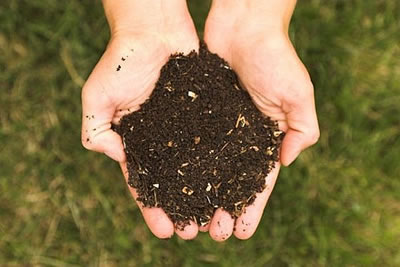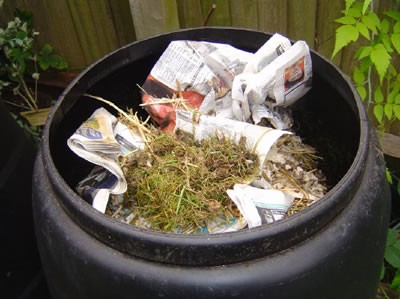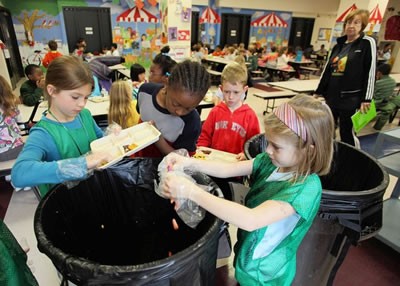Composting
Composting: What Is It & How Do You Do It?
Composting is nature's way of recycling natural, organic materials into a nutrient rich soil called compost, through decomposition. Anything that was once alive will decompose. Waste from your yard and food account for nearly 30% of your total household waste. By composting your kitchen and garden waste, you can have a big impact on reducing waste!

Compost
Backyard Composting
Backyard composting is a way to accelerate nature's own decomposition process and transform your organic waste into a nutrient, rich soil that you can apply to your own garden. To create an effective, high-quality compost pile, you need an optimal mix of dry high carbon ingredients, fresh high nitrogen materials, water, air, and soil.

Compost Bin
To build your pile, find a flat, well-drained surface that is accessible to water and for adding new organic materials. It does not matter whether your compost bin or pile is located in the sun or shade as it is the microbes that heat up the pile, not the sun. Next, add your mixture of dry and fresh organic material. Typically, you will need three parts dry material to one part fresh material. (See below for a list of ingredients.) Add water as you build the pile to keep it evenly moist throughout. Microbes require moisture to thrive. Last but not least, be sure to periodically turn your pile. This will help keep the temperature at an optimal 105º-140ºF, eliminate disease, break apart compacted material, add oxygen, and reduce odor. Your compost will be ready to apply to your garden when the material is dark brown, has a rich humus look and smells like the forest.
Ingredients: The Do's and Don'ts of Composting
Once you have set up your composting system, what should you feed it? Here is a list of what to add and what to avoid.
Good sources of nitrogen:
• Grass clippings
• Egg shells
• Coffee grounds
• Fruits and vegetables
• Tea bags
• Grains
• Manure from herbivores: cows, horses, chickens, rabbits
Good sources of carbon:
• Newspaper
• Sawdust
• Leaves
• Straw
• Dried grasses
• Yard waste
• Cardboard: cereal or cracker boxes, paper plates (broken down into smaller pieces), napkins or paper towels
• Wood ashes from untreated wood
What to Avoid and Why:
• Treated wood: toxic, contains chemicals harmful to plants
• Meat scraps, cheese and bones: decomposes very slowly, emits foul odors and attracts animals
• Fat, oil, grease: prevents anything covered in it from decomposing, attracts animals
• Dog and cat feces: may contain parasites or diseases harmful to humans
• Diseased plants: disease will spread if compost pile does not get hot enough
Top Five Reasons to Compost
1. Reduces kitchen and yard waste!
2. Reduces pest problems—and any need for toxic pesticides—by producing healthier plants that can fend off pests and diseases on their own.
3. Diverts organic waste from landfills and water treatment facilities, reducing overall household waste.
4. Nutrient rich soil produces healthier, more nutrient rich plants, fruits and vegetables.
5. Amending the soil with organic material improves moisture retentions and reduces water use.

Children sorting lunch waste for compost


